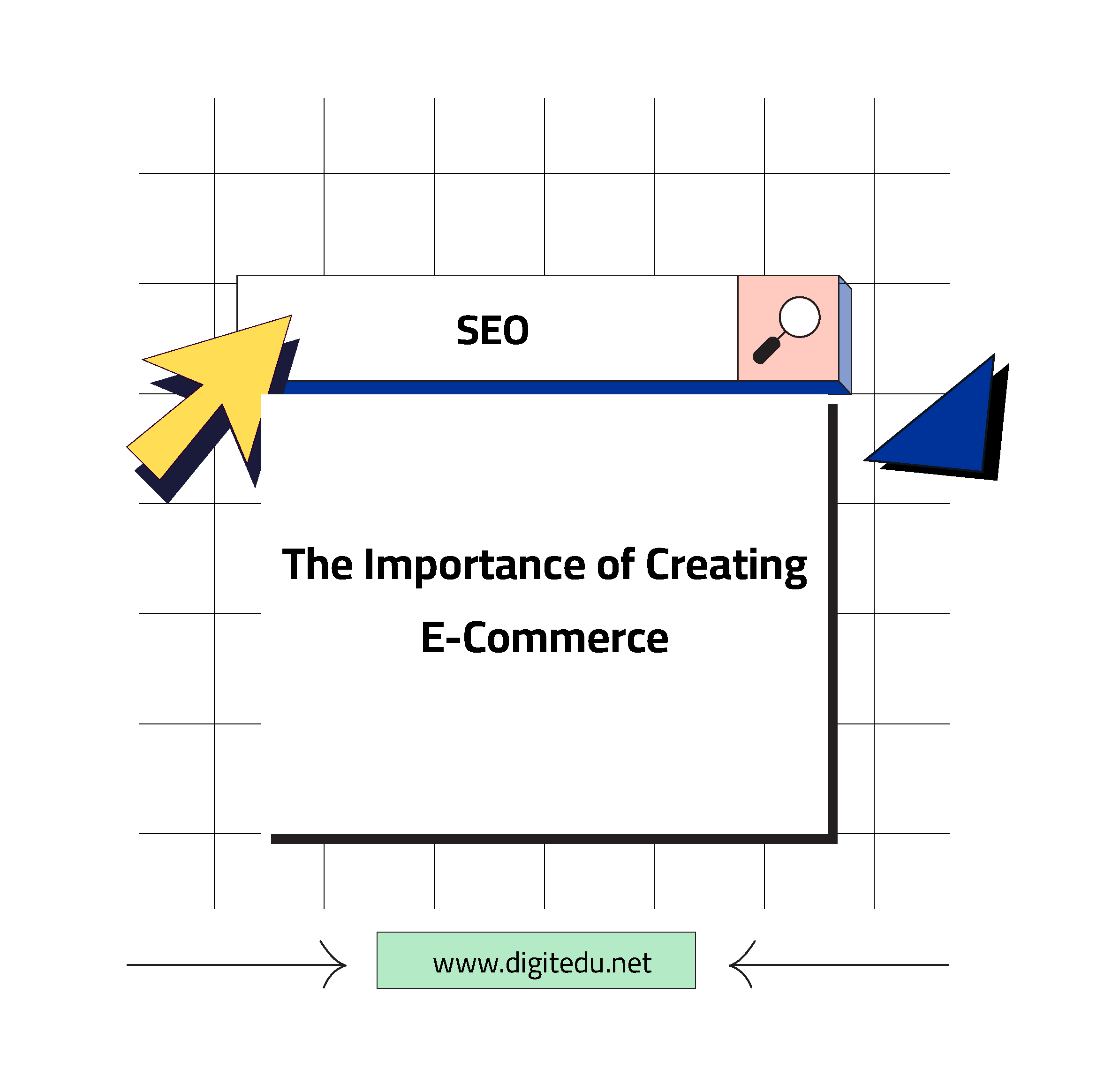Establishing an online store is an essential step for individuals and companies that want to enter the world of e-commerce and exploit opportunities for growth and expansion in the digital market. Here are some reasons why creating an online store is necessary:
- Reach a wider audience: Your online store allows you to reach a global audience easily, Which increases the chances of selling your products to a larger number of potential customers.
- Providing a comfortable shopping experience: Customers can shop at any time and from anywhere through your online store. Without having to go to the physical store, Which makes the experience more comfortable and convenient.
- Lower cost: Creating an online store requires much less cost than creating a physical store. Which helps reduce operational costs and increase profitability.
- Flexibility of operation: An online store allows you to have full control over sales and marketing operations, inventory management, and promotions in a flexible and effective manner.
- Data Analysis: An online store provides you with access to detailed data about customer behavior and sales performance. Which enables you to improve your marketing strategies and increase the effectiveness of advertising campaigns.
Steps to create an online store include:
Establishing an online store requires continuous planning and following specific steps to ensure the success of the project. Here are the steps to create an online store in detail:
- Goal setting and research:
- Determine the type of products or services you want to sell.
- Study the market and analyze competitors to understand demand and trends.
- Platform selection:
- Choose an e-commerce platform that suits your needs such as Shopify , WooCommerce , Magento , or BigCommerce .
- Domain registration and hosting:
- Choose a domain name that represents your brand and make sure to register it.
- Choose a reliable hosting service that fits your site’s needs.
- Customize design:
- Choose a website template or design that suits your field of work and provides a comfortable user experience.
- Customize colors, fonts, images and logo to match your brand identity.
- Add products:
- Add a description and high-quality photos for each product or service you offer.
- Organize products into logical categories and sections to make browsing easier.
- Configure the payment process:
- Select available payment options such as credit cards, PayPal, Apple Pay, Or payment services upon receipt.
- Ensure the security of financial transactions through the use of encrypted security protocols.
- Select shipping options:
- Choose logistics services that fit the scope of delivery of your products and the needs of your customers.
- Determine shipping policies, costs, and expected duration of delivery.
- Security and privacy setting:
- Providing privacy policies, terms of use, and return policies to protect customers’ personal information and ensure trust.
- Site testing:
- Experiment and test the site to ensure smooth browsing and a positive experience for users.
- Correct any errors or technical problems that customers may encounter.
- Launch and Marketing:
- Launch the site after ensuring it is ready.
- Use digital marketing tools such as online advertising, Social media marketing, Email marketing to attract more potential customers.
- Performance follow-up:
- Use data analysis tools to understand website and marketing performance and improve strategies based on the data derived.
- continuous improvement:
- Continue to improve and develop the store based on feedback, analysis and market changes to ensure continued success and growth.
By following these steps carefully, You can build a successful online store that meets the needs of your customers and contributes to the growth of your online business.
Online Store SEO
Search engine optimization (SEO) for your online store is essential to increase visibility, reach your target audience, and increase sales. Here are some key steps to improve your online store’s SEO:
- Search for the right keywords:
- Use keyword research tools like Google Keyword Planner or SEMrush to choose keywords that are relevant to your products or services and that customers are searching for.
- Optimize the title and description of the page:
- Place keywords in page titles and meta descriptions in a natural and attractive way to improve search results and increase click through rate (CTR).
- Improve user experience:
- Improve site loading speed and user experience to make the site easy to use and browse across mobile devices and different screens.
- Create high-quality content:
- Create unique and valuable content on your store’s blog that solves customers’ problems or provides them with useful information about your products or services.
- Optimize images:
- Use alt tags in images properly and describe images appropriately using relevant keywords.
- Building links:
- Work on building high-quality external links from reputable sites that point to your online store. This increases the level of trust and authority among search engines.
- Social media marketing:
- Use social media to promote your online store, drive traffic and increase engagement with your potential customers.
- Feedback and continuous improvement:
- Seek feedback from customers and analyze data to understand how to continuously improve your store and update strategies based on results.
By implementing these steps in a regular and organized manner, You will be able to improve your online store’s website in search engine results and increase the chances of it being found by potential customers.
Data analysis and continuous improvement of the store
Data analysis and continuous improvement of your online store are vital to ensuring its success and achieving your business goals. Here are some steps to analyze data and continuously improve the store:
- data analysis:
- Use web analytics tools such as Google Analytics to understand visitor behavior on your site, such as the number of visits, movement sources, and browsing behaviour.
- Analyze sales data to understand product performance, returns, The average value of orders, New customers versus existing customers.
- Explore social media data to measure engagement, engagement, and audience demographic analytics.
- Setting goals:
- Determine the main goals that you want to achieve through the online store, such as increasing sales, increased traffic, Improve conversion rate, etc.
- improve the performance:
- Use analytical data to determine the strengths and weaknesses of your website and marketing strategy. Then develop plans to improve performance in these areas.
- Improve user experience based on available data, Such as improving download speed, and simplify the purchasing process, Optimize homepages and product pages.
- Marketing strategies:
- Evaluate the performance of current marketing campaigns and promotion strategies, And adjust and improve it based on analytical data to achieve the best results.
- Optimize your email and social media marketing strategies based on analytics to increase engagement and sales.
- Explore opportunities:
- Use data to identify new opportunities to expand your business, Such as targeting new markets or offering new products or services.
- Experimentation and improvement:
- Implement small, frequent changes to your site and strategy based on data and analyze the results to continuously improve performance.
- Monitor and evaluate:
- Regularly monitor results and measure the impact of changes on your online store’s performance. Use this information to adjust your strategy periodically.
By following these steps and applying them regularly, You will be able to analyze data and continuously improve your online store to achieve success and increase return on investment.


